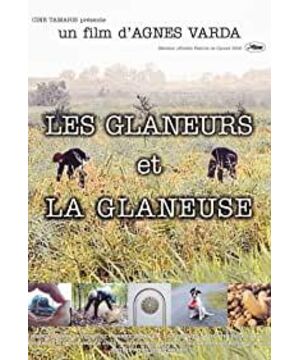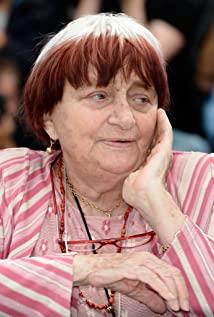This Huada's masterpiece is a very important documentary in her late stage of creation. She used Liquid Crystal Display to shoot. It was first broadcast on French TV and later in theaters. The film uses DV to interview people who are still picking up waste, from farmers picking potatoes in the countryside, homeless people looking for food in supermarket garbage dumps, to artists seeking creative raw materials and collecting waste. All kinds of modern "pick and drop" appear in the lens. By". The director also gave different interpretations of the motives behind these people's picking up. This documentary is smoothly and beautifully filmed and poetic, showing the director's many years of professional skills. The reason for the film's acclaim in Europe is not only Huada's technology, but also her sense of social responsibility.
A low-cost experimental art documentary filmed by DV. In more than two years, it participated in almost all important international film festivals and won 30 awards. In any case, it must be a miracle. This film is "The Scavengers", and the director is Añez Varda, who enjoys the reputation of "Mother of the New Wave". "The Scavengers" won the 30th prize in Los Angeles on December 13, the "Pioneer Award" issued by the International Documentary Association. After accepting the award, Varda, 74, said happily in an interview with reporters: "I have made films for 48 years, and this film has won the most awards." She also said: "The awards I won at this age are mostly for me. The people here give me the Pioneer Award in an elegant way. They kind of regard me as the grandmother of the New Wave."
From December 1998 to April 1999, Varda, who was over seventy years old, took Digital Video to "wander around" French cities and villages and personally took some images about today's scavengers. After a year of post-production, an 82-minute documentary was completed in June 2000, with the French title Les Glaneurs et la glaneuse, which can be literally translated as "scavengers and female scavengers" in Chinese. The "scavengers" refer to the characters taken by Varda, and the "female scavengers" refer to Varda himself.
This film, inspired by the famous painting "The Gleaner" by the French painter Jean-Francois Millet in the 19th century, depicts the image of scavengers in France in this era: from farmers picking potatoes in rural farmland to those in food supermarkets Urban residents rummaged through the garbage dumps for food that is still edible, and then artists looking for waste that can be used to make works of art. Scavengers talked about their views on scavenging in front of Varda's camera. Varda divides all kinds of scavengers into three categories: "Some people pick up waste because they are forced by life, some people pick up waste because they are artists, and some people pick up waste because they like to pick up waste." Homeless people and people living in poverty pick up for their livelihoods. Various necessities of life. Artists look for the raw materials to create works of art from the waste of copper and iron. The motives of those who like to scavengers are more motivated by the character of "practicing economy and opposing waste". Varda said: "This is a film about waste."
The main clue of Scavengers is scavenging, and at the same time there is a secondary line that is separated from the main line, that is, it shows some things that seem to have nothing to do with scavenging. For example, when Varda visited a vineyard, he learned that the owner of the vineyard happened to be a descendant of Marais, one of the pioneers of the invention of cinema. Pay tribute to the "father of the man". She said: "It is obviously very difficult to show Marais in a film about scavenging waste, but it is indeed a surprise. I allow myself to discover such things freely, because I can say that this is also a search for myself. A video of the Scavenger’s Journey.” Everyone in "The Scavenger" is scavenging waste, and Varda, who wanders around the camera, is also picking up and reminiscing about those forgotten people and things.
"The Scavengers" is also a self-portrait of the film's author. Varda walked from behind the camera to the front of the camera from time to time, even when she was behind the camera, she also deliberately expressed herself appropriately, and some shots were taken by her herself, just like the person who took the camera quickly ran to the front of the camera after pressing the selfie button. Do it yourself. The artistic achievement of Scavengers is not only reflected in Varda’s creation of an experimental digital documentary with first-person narration, but also in how the film director grasps the “self” and “subjective” of the film author. The subtle boundary between the "others" in the social reality being photographed is also something that is often forgotten.







